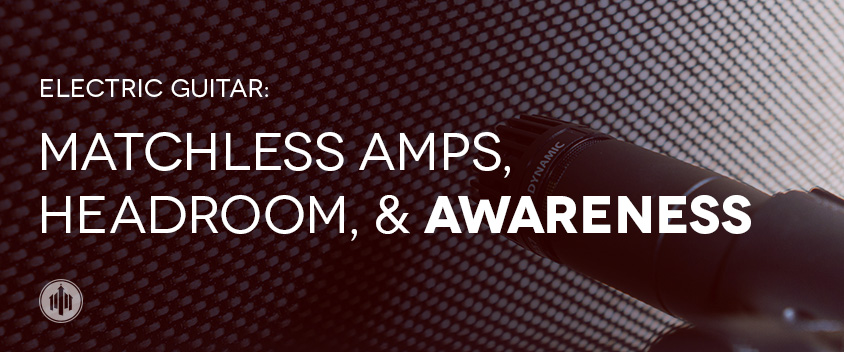
When I set out to write this article, it was going to be a sort of personal essay about how getting a Matchless amp changed me as a guitarist. It did. But the broader view of that event for me is the more important one: maturation as a musician. So that’s what I’m going to talk about.
After using a small old Supro amp from the sixties for two years of leading worship, I realized that I needed a different amp to get the sounds I wanted. The Supro was great for the sorts of low-wattage amp drive tones that you’d find on a Switchfoot record, but I found that my delays and reverbs were simply turning to mud with its lack of headroom.
**Quickly, “headroom” is the measurement of how loud an amp can get before it begins to break up, but clean headroom—among a myriad of factors—also contributes to how much space your effects have to float around before they get too squashed and turn something beautiful into a muddy signal, especially when you’re also using a drive pedal. I like to think of it like the ceiling in a room.**
So, this Supro. I loved it (and I still do). But ultimately, I had to reconcile with the fact that it wasn’t giving me everything I needed from an amp, and that it was time to invest in something else. I shopped around, researched my purchase, and talked to some people who had much more experience with amplifiers than I did. There were many great recommendations, but I kept coming back to Matchless. They’re great amps with a strong company history, two of my favorite guitarists (James Duke & Andy Othling) use them extensively, and they embody the style of many classic amp circuits while adding modern features and usability.
With all of that to consider, I went to Austin Vintage Guitars in Austin, TX and sat down with a beautiful green Matchless Lightning. I loved it: a full, chimey sound which was reminiscent of a great vintage AC30, but with simplified controls and a master volume that I could use to tame it without losing any of the charm. That was it.
It changed everything.
It changed everything for me because I was finally able to achieve the sweeping soundscapes of reverb and delay that I’d always heard in my head. It showed me how naturally dark the Supro is, and thus how useful the tone knob on my guitars and pedals actually is. It allowed me to hear my own guitar tone as I always imagined it, and how it was supposed to be. It taught me the true meaning of touch sensitivity and warmth and all of the other things that people say about high-end tube amps.
All of these things were important: the realizations I was having about my own playing, the gear I was using, and how those variables interacted with each other helped me mature as a guitarist. But the #geartalk was only part of it.
The biggest realization I had was simply to be more aware. It took two years to realize what was wrong with the Supro, and why I was never quite happy with it—two years of maturing and developing to a point where I was aware enough of what I had, what I was doing, and what I wanted to be able to diagnose the problem, seek advice, and find a solution. While getting to that place earlier would have been even better, the journey I took to get there was important and formative for me as a guitarist…and the eventual destination was pretty sweet, too.
So, no matter what awareness looks like—maybe it’s knowing what changes to make to your rig, or knowing not to play that solo during the confession, or just working around the strengths and weaknesses of those on your team—it’s an easy step we can all take towards the important goal of constantly striving to become better people, team members, musicians, and leaders in our communities.

